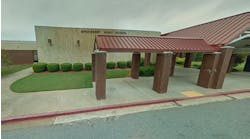University and school administrators, as well as parents who send their children off to school or college, understand that safety and preparedness is one of the most pressing issues for the nation's education institutions. The dynamics of education have changed considerably, especially in light of the tragedies and incidents of the past decade.
Although schools and universities still are focused on their educational missions, they now face a multitude of threats and risks. From campus violence and terrorist attacks to natural disasters and infectious diseases such as the H1N1 virus, the challenges are wide-ranging and difficult. As a result, it has become important for school leaders to address these issues from an all-threats perspective — with particular emphasis on effective emergency communications involving on-site school personnel, first responders, off-campus students and the general public.
In order to keep students, staff and facilities as safe and secure as possible, education institutions must take an all-encompassing approach to safety and preparedness. An overall life-safety and emergency preparedness plan should be at the heart of this effort. The plan ideally should combine the application of integrated, cost-effective systems and technologies with the adoption of policies and procedures aimed at protecting life and property.
It's a process
Four essential components feed into the overall process of making an institution safer, more secure and better prepared for the risks, threats and emergencies that could come their way:
-
Complete a detailed life-safety assessment and needs analysis. In education institutions, the focus on life safety is perhaps higher than ever. Campus safety has become a major factor that students, parents, faculty and staff consider when choosing a college or university. School safety also is a paramount concern at the primary and secondary levels. All of this underscores the importance of a well-constructed plan that encompasses all the risks, threats, systems, technologies and procedures relating to the protection of life and property in a school environment.
The first step in developing the plan is completing a life-safety assessment and needs analysis. This helps identify an institution's vulnerabilities and the range of threats that must be considered — from weather emergencies, vandalism and violence to fire hazards, unwanted intruders and infectious diseases. This evaluation should assess the overall life-safety infrastructure, including fire, security and emergency communications systems. It also should identify specific protection goals, for people as well as physical and intellectual property, and assess fire and safety codes and standards that need to be met. The completed assessment should outline a list of risks that need to be mitigated. As part of the analysis of the infrastructure, schools should evaluate personnel and their skill levels and training capabilities, as well as written policies, response procedures and the current status of the crisis-management team.
-
Generate strong stakeholder engagement and cooperation. The success of safety and preparedness efforts sometimes hinges on the ability to generate cooperation and support from stakeholders. Although "top-down" leadership and commitment can drive this process, many different groups within an education institution have a role to play in formulating, executing and monitoring the life-safety and emergency-preparedness plan. Security, facilities management, information technology, in-house engineering and student-housing departments all can contribute valuable information, as can public-sector first responders such as law enforcement, fire service, and EMT and ambulance personnel.
It is important to have senior administrators involved to help overcome potential interdepartmental barriers. From the start, be sure to inform and educate senior leadership on this initiative. They should be involved in establishing the tone for the program, directing their teams to pull together, and maintaining oversight going forward.
Faculty, staff and student constituencies also should be active participants. It is imperative to obtain input and buy-in from all these groups, not only in the planning stage but also as decisions are made and carried out. Finally, don't forget parents and the community at large. Involving them — and keeping them informed along the way — will demonstrate an institution's openness and commitment to safety and preparedness.
-
Developing a comprehensive life-safety plan that includes appropriate emergency preparedness policies and procedures. Considering the challenges and the range of threats facing education institutions, a comprehensive life-safety and emergency preparedness strategy is required to prepare key decisionmakers — administrators, faculty, students, and responders (campus and jurisdictional) — for any type of event that may occur.
This plan should spell out the policies and procedures that will be followed to help ensure the safety of those who live, work or study at an institution. It also should detail the communications technologies and processes that will be used to inform internal and external stakeholders in an emergency. The goal is to protect life and property, provide continuity of operations, and facilitate a return to normalcy as soon after an incident as possible.
The plan should be constructed as a comprehensive emergency response and management tool that promotes cooperation and coordination among multiple departments, organizations and jurisdictions. It needs to address the responsibilities of school or university departments throughout various phases of emergency response, management, recovery and analysis. Among other strategic components, at a minimum the plan should:
-
Identify departments and individuals (an emergency management team) responsible and accountable for emergency-response and critical-support services.
-
Designate an emergency management director to control emergency operations and direct the team.
-
Provide a structure for coordinating and deploying essential resources.
-
Clearly list critical steps that need to be taken by key responders during an emergency.
-
Identify potential incidents and establish response levels that summarize the severity of emergencies and types of responses required.
-
Understand the value and limitations of campus alert systems.
-
Clearly outline how information will be managed and disseminated.
-
Establish an "After Action" team that focuses on lessons learned after a major incident or event.
-
-
Providing necessary education and training for students, staff and emergency responders, and performing regular life-safety system testing and maintenance. It is critical to acquaint students, faculty and staff with safety systems and procedures, and keep them updated on changes in policy and notification techniques. Toward that end, it may be useful to add periodic safety evacuation drills to the school's schedule and include relevant explanatory information in orientation materials. Students can be shown the location of emergency call stations and duress buttons and review the appropriate response to emergency sirens, strobe signaling and emergency text messages.
In addition, all employees should be trained in proper emergency-response procedures. This awareness training can be accomplished in training sessions, staff meetings, computer-based training or through any other program deemed appropriate by the department head and coordinated by the emergency management director. This type of ongoing training helps responders at all levels to work together to manage emergencies, no matter their cause, size or complexity.
Another factor to be considered in a life safety and emergency-preparedness plan is the readiness of fire and life-safety systems and equipment. Routine inspection, testing, maintenance and repair are fundamental to keeping life-safety systems in top working order and ready for an emergency. Such testing generally is mandated by codes and regulations.
- Read the "A layered approach to emergency communications" sidebar to learn why multiple layers of technology are necessary for complete security.
Giannini, CPP, director of security and emergency communications marketing at SimplexGrinnell, a Tyco International company, Westminster, Mass., has more than 30 years of experience in the security and life-safety industry. He can be reached at [email protected].
Related Stories
A layered approach to emergency communications
Emergency communications pose complex challenges for schools, colleges and universities. Yet, one thing is clear: In today's world, no single technology can provide a complete solution. The best approach is to deploy multiple layers of technology to disseminate critical information to the people who need to have it. A multi-technology approach to emergency communications can combine voice communications, visual messaging and wireless personal notification capabilities to communicate with all constituencies during a crisis.
-
Voice communications. Interior voice systems driven by advanced fire-alarm networks and possessing built-in survivability can broadcast live or recorded messages instantly throughout any institutional setting. A universal message, or an individual message tailored to a specific area, building, floor or room, can be delivered through such a voice-enabled system. It can provide immediate communications that also can be modified to match changing conditions. A voice-enabled fire-alarm system can be supplemented by outdoor speaker systems capable of broadcasting real-time warnings and instructions to exterior gathering spots, off-site buildings and satellite properties.
-
Visual messaging. Visual messaging displays can be an important element of an emergency communications solution. These units can be mounted in a building or other places on campus to display live or pre-programmed textual messages and alerts. Messages can be tailored to specific buildings, floors or rooms, and are useful for the hearing-impaired. They can offer stationary incident headings or detailed scrolling instructions keyed in from a campus command center.
-
Wireless personal notification. Subscription services can offer powerful technologies for automatically transmitting vital information to a wide array of personal communications devices, including smartphones, pagers and other electronic applications. This information can reach popular blogs, wikis and social networks such as Twitter. This means individuals, both on and off campus, can be informed instantly of potential or unfolding emergencies or events.



